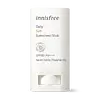What's inside
What's inside
 Key Ingredients
Key Ingredients

 Benefits
Benefits

 Concerns
Concerns

 Ingredients Side-by-side
Ingredients Side-by-side

Water
Skin ConditioningAlcohol Denat.
AntimicrobialDiisopropyl Sebacate
EmollientIsopropyl Lauroyl Sarcosinate
Skin ConditioningEthylhexyl Triazone
UV AbsorberPropylene Glycol
HumectantBis-Ethylhexyloxyphenol Methoxyphenyl Triazine
Skin ConditioningDiethylamino Hydroxybenzoyl Hexyl Benzoate
UV FilterTitanium Dioxide
Cosmetic ColorantGlycerin
HumectantMethyl Methacrylate Crosspolymer
Drometrizole Trisiloxane
UV AbsorberTocopherol
AntioxidantStearic Acid
CleansingPhenoxyethanol
PreservativeCetyl Alcohol
EmollientPalmitic Acid
EmollientStyrene/Acrylates Copolymer
Ceteth-10
EmulsifyingCaprylyl Glycol
EmollientMenthoxypropanediol
MaskingDextrin Palmitate
EmulsifyingAcrylates/C10-30 Alkyl Acrylate Crosspolymer
Emulsion StabilisingAluminum Hydroxide
EmollientAmmonium Polyacryloyldimethyl Taurate
Emulsion StabilisingButylene Glycol
HumectantPotassium Hydroxide
BufferingPEG-8 Laurate
EmulsifyingDisodium EDTA
Adenosine
Skin ConditioningMyristic Acid
CleansingGentiana Lutea Root Extract
Skin ConditioningPentylene Glycol
Skin ConditioningMentha Piperita Extract
CleansingButyrospermum Parkii Seedcake Extract
Skin ProtectingRosa Gallica Flower Extract
AstringentSorbitol
HumectantMoringa Oleifera Seed Extract
Skin ConditioningDisodium Phosphate
BufferingCitric Acid
BufferingWater, Alcohol Denat., Diisopropyl Sebacate, Isopropyl Lauroyl Sarcosinate, Ethylhexyl Triazone, Propylene Glycol, Bis-Ethylhexyloxyphenol Methoxyphenyl Triazine, Diethylamino Hydroxybenzoyl Hexyl Benzoate, Titanium Dioxide, Glycerin, Methyl Methacrylate Crosspolymer, Drometrizole Trisiloxane, Tocopherol, Stearic Acid, Phenoxyethanol, Cetyl Alcohol, Palmitic Acid, Styrene/Acrylates Copolymer, Ceteth-10, Caprylyl Glycol, Menthoxypropanediol, Dextrin Palmitate, Acrylates/C10-30 Alkyl Acrylate Crosspolymer, Aluminum Hydroxide, Ammonium Polyacryloyldimethyl Taurate, Butylene Glycol, Potassium Hydroxide, PEG-8 Laurate, Disodium EDTA, Adenosine, Myristic Acid, Gentiana Lutea Root Extract, Pentylene Glycol, Mentha Piperita Extract, Butyrospermum Parkii Seedcake Extract, Rosa Gallica Flower Extract, Sorbitol, Moringa Oleifera Seed Extract, Disodium Phosphate, Citric Acid
Isopropyl Palmitate
EmollientButylene Glycol Dicaprylate/Dicaprate
EmollientPolyethylene
AbrasiveC12-15 Alkyl Benzoate
AntimicrobialPolymethylsilsesquioxane
Vinyl Dimethicone/Methicone Silsesquioxane Crosspolymer
Titanium Dioxide
Cosmetic ColorantHdi/Trimethylol Hexyllactone Crosspolymer
Vinyldimethicone
Ozokerite
Emulsion StabilisingAluminum Stearate
Cosmetic ColorantPolyhydroxystearic Acid
EmulsifyingCaprylic/Capric Triglyceride
MaskingPolyglyceryl-4 Diisostearate/Polyhydroxystearate/Sebacate
EmulsifyingAlumina
AbrasiveParfum
MaskingSilica
AbrasiveDehydroacetic Acid
PreservativeStearic Acid
CleansingWater
Skin ConditioningSodium Hyaluronate
Humectant1,2-Hexanediol
Skin ConditioningOpuntia Ficus-Indica Stem Extract
Skin ConditioningIsopropyl Palmitate, Butylene Glycol Dicaprylate/Dicaprate, Polyethylene, C12-15 Alkyl Benzoate, Polymethylsilsesquioxane, Vinyl Dimethicone/Methicone Silsesquioxane Crosspolymer, Titanium Dioxide, Hdi/Trimethylol Hexyllactone Crosspolymer, Vinyldimethicone, Ozokerite, Aluminum Stearate, Polyhydroxystearic Acid, Caprylic/Capric Triglyceride, Polyglyceryl-4 Diisostearate/Polyhydroxystearate/Sebacate, Alumina, Parfum, Silica, Dehydroacetic Acid, Stearic Acid, Water, Sodium Hyaluronate, 1,2-Hexanediol, Opuntia Ficus-Indica Stem Extract
Ingredients Explained
These ingredients are found in both products.
Ingredients higher up in an ingredient list are typically present in a larger amount.
Stearic Acid is a fatty acid. It is an emollient, emulsifier, and texture enhancer.
As an emollient, stearic acid helps soften skin. It aids the skin's protective barrier by preventing water loss. It also provides a gentle cleansing effect without stripping away natural oils.
Stearic acid may also be used to enhance the texture of products. It can add volume and stabilize ingredients such as water and oil. This can help water and oil ingredients from separating.
Sources of stearic acid include animal or vegetable fats/oils such as coconut or shea. It can be naturally found in butter, cocoa butter, shea butter, vegetable fats, and animal tallow.
This ingredient may not be Malassezia folliculitis, or fungal-acne safe.
Learn more about Stearic AcidTitanium dioxide is a mineral UV filter widely used in sunscreens and cosmetics.
It is one of only two UV filters officially classified as “mineral” by regulatory agencies, the other being zinc oxide.
Titanium dioxide provides broad-spectrum protection mostly in the UVB and UVAII range, with some protection in the UVAI range.
While its UVA protection isn’t as strong as zinc oxide’s, the difference is minor.
A common myth is that mineral UV filters reflect UV light. However, modern research shows titanium dioxide absorbs UV radiation like chemical filters (~95% absorption & 5% reflection).
Thanks to its non-irritating nature, titanium dioxide is suitable for sensitive, acne-prone, or redness-prone skin. It is unlikely to cause "eye sting" like other sunscreen ingredients.
A major drawback of this ingredient is its white cast and thick texture. This is why mineral sunscreens often leave a white cast and are less cosmetically elegant than chemical/hybrid sunscreens.
To improve white cast and spreadability, micronized or nano-sized titanium dioxide is often used.
There are ongoing concerns surrounding nano-titanium oxide's impact on marine ecosystems.
There is no conclusive evidence that any form of titanium oxide (or any other sunscreen ingredients) will cause harm to marine ecosystems or coral reefs. The science is still developing but many consumers are keeping a close eye on this issue.
Please note, many destinations have reef-safety sunscreen rules. For instance, the U.S. Virgin Islands advises all visitors to use non-nano mineral sunscreens.
Nano mineral sunscreens once raised safety concerns about absorption into skin.
Extensive research has shown that they do not penetrate healthy or damaged skin; they remain safely on the surface and the top layer of dead skin (stratum corneum).
You'll likely find titanium dioxide bundled with alumina, silica, or dimethicone. These ingredients help make titanium dioxide highly photostable; this prevents it from interacting with other formula components under UV light.
Learn more about Titanium DioxideWater. It's the most common cosmetic ingredient of all. You'll usually see it at the top of ingredient lists, meaning that it makes up the largest part of the product.
So why is it so popular? Water most often acts as a solvent - this means that it helps dissolve other ingredients into the formulation.
You'll also recognize water as that liquid we all need to stay alive. If you see this, drink a glass of water. Stay hydrated!
Learn more about Water